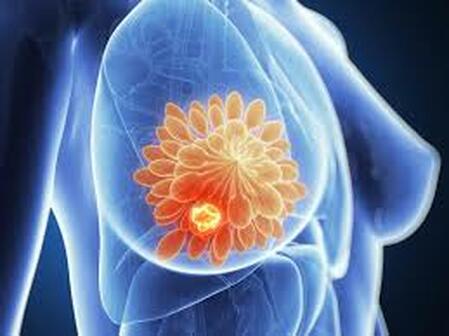High intake of vitamin D, calcium and phosphorus may reduce breast cancer risk

High vitamin D, high calcium and phosphorus intake are associated with low breast cancer risk.
Vitamin D helps regulate bones, teeth, and muscle health and lack of this vitamin can lead to many
health problems, including rickets, bones softening and increasing vulnerability to fractures and
deformity. Generally, low levels or suboptimal levels of vitamin D have been linked to the development
and progression of many autoimmune diseases.
Breast cancer (BC) is ranked as the first type of cancer worldwide. Globally, breast cancer is rapidly
becoming a major common health problem among women. A recent study has shed light on the
association between nutrient intake patterns and risk of breast cancer among Jordanian women.
The study has found that high vitamin D, high calcium and phosphorus nutrient intake pattern is associated with reduced breast cancer risk. However, a high intake of vitamin C and β-carotene, as well as high-fats nutrients, is associated with a significantly increased risk of breast cancer. The study has been published in the journal Epidemiology and Health. Many previous studies have demonstrated an association between combined nutrient and dietary patterns to the occurrence of BC. However, most of the association still remains controversial and inconclusive. Although limited current evidence is available to permit a probable causal judgment in their etiological role, diet still plays a role in the continuous increase of BC incidence. Reema Tayyem, The University of Jordan, Amman, Jordan, and colleagues conducted the study to investigate the association between nutrient intake patterns and BC risk among Jordanian women.
This case-control study involved a total of 400 Jordanian women aged 20-65 years. Two hundred of recently diagnosed BC women were matched in age, income and marital status to 200 BC-free women. A food frequency questionnaire to assess the nutrient patterns were used. In this study, 3 nutrient intake patterns have been identified. The first one was a high vitamin C and β-carotene nutrient intake pattern. Secondly was the high calcium, phosphorus and vitamin D nutrient intake pattern. The third one was a high-fat nutrient intake pattern.
In conclusion, high vitamin C, β-carotene and high fats nutrient pattern were associated with an increase in BC risk. High calcium, phosphorus and vitamin D nutrient pattern showed a protecting effect against BC. And the high-fats nutrient pattern was also was associated with a higher risk of BC.
https://speciality.medicaldialogues.in/high-intake-of-vitamin-d-calcium-and-phosphorus-may-reduce-breast-cancer-risk/
Vitamin D helps regulate bones, teeth, and muscle health and lack of this vitamin can lead to many
health problems, including rickets, bones softening and increasing vulnerability to fractures and
deformity. Generally, low levels or suboptimal levels of vitamin D have been linked to the development
and progression of many autoimmune diseases.
Breast cancer (BC) is ranked as the first type of cancer worldwide. Globally, breast cancer is rapidly
becoming a major common health problem among women. A recent study has shed light on the
association between nutrient intake patterns and risk of breast cancer among Jordanian women.
The study has found that high vitamin D, high calcium and phosphorus nutrient intake pattern is associated with reduced breast cancer risk. However, a high intake of vitamin C and β-carotene, as well as high-fats nutrients, is associated with a significantly increased risk of breast cancer. The study has been published in the journal Epidemiology and Health. Many previous studies have demonstrated an association between combined nutrient and dietary patterns to the occurrence of BC. However, most of the association still remains controversial and inconclusive. Although limited current evidence is available to permit a probable causal judgment in their etiological role, diet still plays a role in the continuous increase of BC incidence. Reema Tayyem, The University of Jordan, Amman, Jordan, and colleagues conducted the study to investigate the association between nutrient intake patterns and BC risk among Jordanian women.
This case-control study involved a total of 400 Jordanian women aged 20-65 years. Two hundred of recently diagnosed BC women were matched in age, income and marital status to 200 BC-free women. A food frequency questionnaire to assess the nutrient patterns were used. In this study, 3 nutrient intake patterns have been identified. The first one was a high vitamin C and β-carotene nutrient intake pattern. Secondly was the high calcium, phosphorus and vitamin D nutrient intake pattern. The third one was a high-fat nutrient intake pattern.
In conclusion, high vitamin C, β-carotene and high fats nutrient pattern were associated with an increase in BC risk. High calcium, phosphorus and vitamin D nutrient pattern showed a protecting effect against BC. And the high-fats nutrient pattern was also was associated with a higher risk of BC.
https://speciality.medicaldialogues.in/high-intake-of-vitamin-d-calcium-and-phosphorus-may-reduce-breast-cancer-risk/
